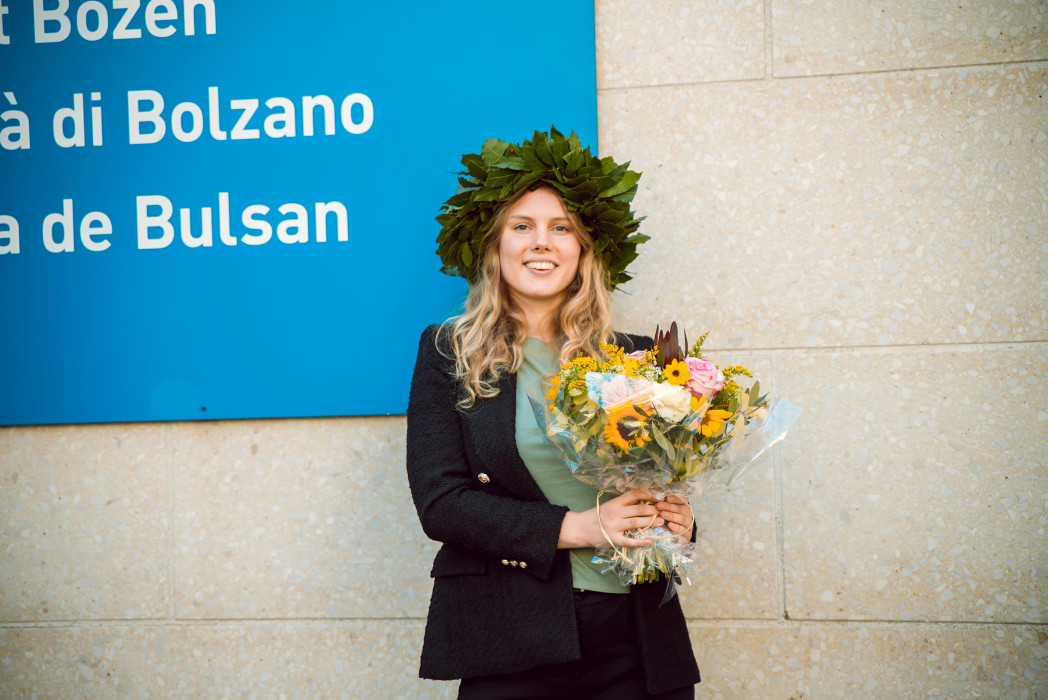
“Hopefully my simulation can contribute to a more sustainable tourism in South Tyrol”
Greta, what was your goal when you first started working on your thesis?
My idea was to enable tourism offices here in South Tyrol to better understand the current tourism situation in the province and how it could evolve. Basically, I wanted to understand how advertisements could change tourists’ behavior and choices.
What did you come up with?
Without going too much into the technical details, prof. Ricci, dr. Massimo and I developed a system that is able to predict what a tourist might choose when exposed to a destination advertisement. It is built on the tourist arrival and presence data provided by the local Institute for Statistics, ASTAT. By exploiting this information, I created a set of interactive visualizations that show the tourist arrival and presence trends in the various districts of the province over time, with the possibility to filter the data by nationality, type of accommodation, and time granularity. This functionality, while not of great scientific value per se, is set up to help tourism and marketing professionals evaluate the current tourism trends and answer various questions, such as which districts are lacking tourists in a specific month or how different nationalities typically behave in different seasons of the year. The same ASTAT-provided data is used for the second, more sophisticated functionality of the system - the simulation of how various marketing campaigns may change tourist destination choices.
How does the latter work?
As a first step, we looked at how researchers in the field of recommender systems typically predict consumer choices. Then, we applied the same ideas to the field of tourism marketing, obtaining a model, which can simulate what destination a tourist might choose when exposed to several possibilities. With this model, we evaluated the effects of several marketing approaches, such as advertising only the most popular items, or, on the contrary - the least visited destinations. We have found that giving personalized lesser-known destination recommendations are very effective at drawing more tourists away from the biggest tourist hot spots of the province. For example, visitors who would typically choose to go to Val Pusteria / Pustertal are likely to enjoy Valle Isarco / Eisacktal, which, while not as popular, can offer a similar holiday experience. In addition to the predefined marketing strategies, the user of the system can also create a custom advertisement and simulate its effects. The system displays the simulation results in a set of interactive visualizations, highlighting which districts would receive an increase, and which - a decrease in tourist arrivals.
So can we say that the instrument you designed and programmed could be one of the solutions to bypass the drawbacks of over-tourism?
Let us say it could be a useful tool to redistribute more equally the tourists in the various districts of South Tyrol and especially to help make some of the not-so-popular destinations more attractive to tourists.
Do you have in mind to turn it into a commercial product?
No, the system is too premature for that, but I would love to make the website freely accessible to the public if they would like to interact with it. As a foreigner, I found it very interesting to play with the data hosted by this system and to discover new facts about tourism in South Tyrol, such as how the tourist arrivals from Italy and Germany compare to each other. As for the simulation part of this work, it is definitely more complex and would need some additions and changes to be commercially used. This was also seconded by the two tourism experts that evaluated the system - they found the application to be relevant but pointed out several necessary additions for added business value. Additionally, we are also thinking of potentially publishing the master thesis as a paper in a Tourism and IT technology journal. Maybe after that I could also receive some feedback and make changes to the system that are not extremely big, adding some new features. However, let us see if we get published, and maybe then there are also new developments.
(zil)